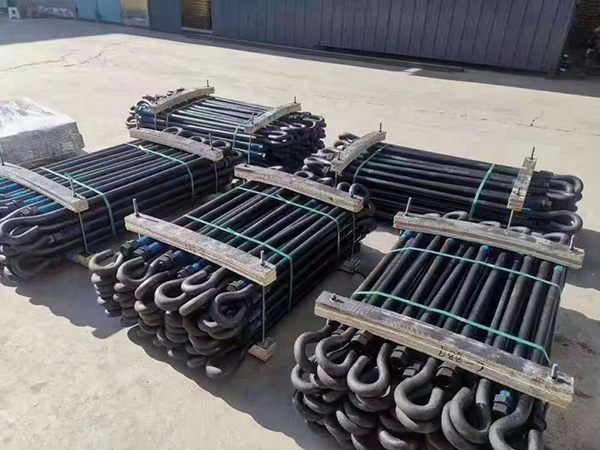-
Working Hours: (00:00 - 24:00)
24/7 Service -
Email:
1029975446@qq.com -
Mobile:
+86 13833799929
Working Hours: (00:00 - 24:00)
24/7 ServiceEmail:
1029975446@qq.comMobile:
+86 13833799929
Basic information
Definition and Naming: The 9-shaped anchor bolt is a common embedded part, named after its shape resembling a "9", also known as the 799 anchor bolt or GB799 anchor bolt.
image
Execution standard: The standard code is GB/T 799-88.
Material: There are usually various materials to choose from, such as Q235, Q345, Q355, 35 #, 45 #, 40Cr, 35CrMo, 42CrMo, etc. The strength and performance of different materials may vary.
Specification: Common specifications generally range from M16-M64, and customized anchor bolts of various lengths and specifications are also supported.
characteristic
Good bearing capacity: With high bearing capacity and bending resistance, it can withstand large tensile, compressive, and bending forces, firmly fix heavy machinery and equipment, and confirm that the equipment will not be displaced or damaged due to vibration, external forces, and other factors during operation.
Easy installation: The installation process is relatively simple, just reserve suitable holes on the foundation, place the anchor bolts into the holes, and then connect and fix the equipment or structure to the foundation by tightening nuts or other methods, without the need for complex installation processes and equipment.
Wide adaptability: Suitable for various types of foundations, such as concrete foundations, steel structure foundations, etc., it can be widely used in construction projects, industrial equipment installation, bridge, tunnel and other infrastructure construction projects, as well as various industries that require foundation embedding.
Good anti-corrosion performance (based on actual reports): Some 9-shaped anchor bolts can undergo special surface treatments such as galvanizing, blackening, Dacromet, etc., which can effectively improve the anti-corrosion performance of the bolts (based on actual reports), extend their service life, and maintain good performance even in harsh environmental conditions.
Application scenarios
Industrial equipment installation: In industries such as heavy machinery manufacturing, mining machinery, and petrochemical equipment, 9-shaped anchor bolts are widely used to fix large mechanical equipment, such as machine tools, generators, compressors, cranes, etc., to confirm the stability and safety of the equipment during operation.
Building structure industry: used in the foundation construction of buildings, such as steel structure factories, high-rise buildings, etc., it can firmly connect structural components such as columns and walls with the foundation, transfer loads, resist external forces such as wind loads and earthquake loads, and protect the overall stability of the building.
Infrastructure construction: plays an important role in the construction of infrastructure such as bridges, tunnels, power towers, streetlight poles, monitoring poles, etc. For example, the piers and abutments used to fix bridges, as well as the foundations of power towers, can withstand large loads and impact forces, confirming the good performance and operation of the infrastructure.
key points of installation
Preparation of reserved holes: During foundation construction, it is necessary to accurately reserve holes of appropriate size and scale according to the specifications and design requirements of the anchor bolts. The position and verticality of the holes should meet the requirements to confirm that the anchor bolts can be installed smoothly.
Placement and positioning of bolts: Place the 9-shaped anchor bolt into the reserved hole to ensure its accurate position, usually requiring the use of measuring tools for calibration to protect the verticality and levelness of the bolt and avoid deviation.
Fixing and pouring: After confirming the correct position of the anchor bolts, temporary fixing measures can be taken to fix them, and then concrete pouring can be carried out to tightly bond the anchor bolts with the foundation. During the pouring process, attention should be paid to compacting and avoiding the occurrence of voids or voids.
Tighten the nut: After the concrete reaches a certain strength, tighten the nut. The tightening torque should meet the design requirements to confirm that the anchor bolts can provide sufficient anchoring force to firmly fix the equipment or structure on the foundation.